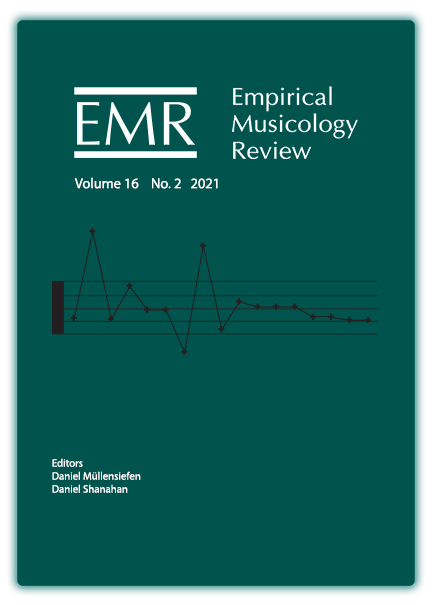A Computational Approach to the Detection and Prediction of (Ir)Regularity in Children's Folk Songs
DOI:
https://doi.org/10.18061/emr.v16i2.8245Keywords:
regularity, IDyOM, information content, entropy, children’s folk songsAbstract
We examine (ir)regularity in the musical structure of 736 monophonic children's folk songs from 22 European countries, by simulating and detecting (ir)regularity with the computational model, IDyOM, and our own algorithm, Ir_Reg, which classifies melodies according to regularity of their musical structure. IDyOM offers a range of viewpoints which allow observation and prediction of various musical features. We used five viewpoints to measure the information content and entropy of musical events in songs. Analysis across the data shows absence of irregular musical structure in children's folk songs from Croatia, Serbia, Turkey, Portugal, Hungary, and Romania. Conversely, absence of regular structure in children's folk songs was found in Great Britain, Norway and Switzerland. Further analysis of (ir)regularity, by individual country, revealed the importance of patterns repeated at pitch in regular songs, and a higher occurrence of transposed repeated patterns in irregular songs. Principal component analysis (PCA) shows the salience of pitch and pitch intervals in the perception of (ir)regular structure. Neither rhythm nor contour affects the perception of regularity. Recurring pulse/meter and arch-like melodic structure were found in the majority of children's folk songs. The study shows that irregularity exists in children's folk songs, and that this genre can be complex.
Published
How to Cite
Issue
Section
License
Copyright (c) 2023 Lorena Mihelac, Janez Povh, Geraint A. Wiggins

This work is licensed under a Creative Commons Attribution-NonCommercial 4.0 International License.


